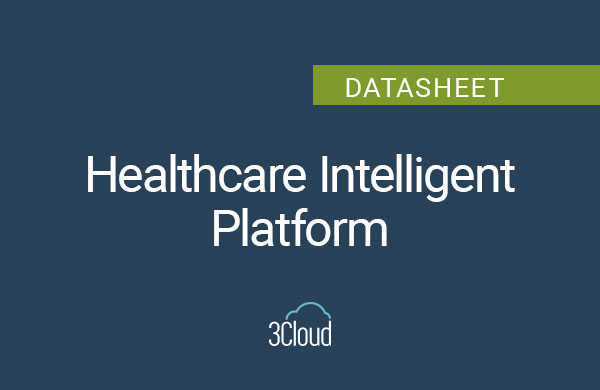Cloud computing is a fundamental step for large enterprises that want to maintain competitiveness and agility today. This blog post will offer a comprehensive exploration of the Azure migration process, highlighting strategic planning, the challenges that may arise, and the most effective practices for a successful transition to the cloud. We will illustrate how our services offer enterprise organizations the ability to enhance their operations by moving to Microsoft Azure. For decision makers and IT professionals, these insights are crucial, shedding light on the tangible benefits and operational improvements that cloud migration can bring.
Navigating Migration
For large businesses today, Azure migration represents a strategic shift towards a technological infrastructure that promises growth, security, and innovation. It’s the process where companies transition their on-premises workloads and applications to Microsoft Azure’s cloud platform. The relevance of Azure migration cannot be overstated, particularly for U.S.-based enterprises that must meet the demands of a dynamic market while ensuring their IT infrastructure is both resilient and adaptable.
3Cloud is a trusted guide and is 100% focused on Microsoft Azure. This expertise is not just claimed but recognized and awarded within the industry.
Understanding Azure Migration
Azure migration is the strategic process of moving enterprise data, applications, and workloads from on-premises data centers to Microsoft Azure’s cloud platform. This shift enables organizations to tap into Azure’s powerful cloud services, offering scalability and a pay-as-you-go pricing model that can lead to significant cost savings. The goal is to enhance business agility and innovation by leveraging Azure’s global network and advanced capabilities.
The steps in an Azure migration journey typically involve a series of methodical and strategic actions:
- Assessment: Identifying which applications and workloads are ready for migration and which may need modifications.
- Migrating Databases: Using services like Azure SQL Database or Azure Database Migration Service to transfer databases to Azure.
- Azure Migrate Assessments: Utilizing Azure Migrate to assess compatibility and performance needs for virtual machines and other workloads.
- Azure Site Recovery: Implementing a strategy for disaster recovery to ensure minimal downtime during and after the transition.
- Migration Service: Choosing the right Azure migration service for your workloads, whether it be for web apps, virtual machines, or databases.
- Deployment: Moving the selected workloads to Azure and ensuring they are properly configured.
- Optimization: Post-migration, continuously optimizing resources to save costs and improve performance.
As businesses generate more data and demand more from their IT infrastructures, the need for a solution that can scale and adapt becomes increasingly apparent. Azure’s cloud environment offers just that—a platform that not only supports current operational needs but also anticipates future demands. This foresight provides businesses with the agility to respond to market changes, manage costs effectively, and pursue new opportunities without the constraints of traditional IT infrastructures.
The Migration Process
Migrating from on-prem environments to Azure is a structured process that requires careful planning and execution. It is important that the organization designs a strategy that aligns with their business objectives, considering factors like downtime, cost, and security. After a strategy is in place, there is a thorough assessment of the current infrastructure, determining what can be moved as-is and what may require re-architecting for compatibility with the cloud. Once all the groundwork is in place, the actual migration of data, applications, and workloads can begin.
To provide a detailed step-by-step guide, we leverage our expertise and support capabilities as follows:
- Initial Consultation: Engage with your team to understand your migration goals and requirements.
- Customized Assessment: Use proprietary tools and methodologies to assess your specific scenario, providing a tailored roadmap.
- Proof of Concept: Develop a proof of concept to demonstrate the migration process and set clear expectations.
- Full-Scale Migration Support: Offer hands-on support throughout the full migration process, including post-migration optimization.
- Training and Enablement: Provide your team with the training they need to manage and operate your new Azure environment effectively.
- Managed Services: After migration, we offer ongoing support and management to ensure your Azure environment remains optimal.
By leveraging 3Cloud’s comprehensive support capabilities, businesses can navigate the complexities of Azure migration with confidence, ensuring a smooth transition.
Benefits of Azure Migration
The migration of enterprise companies to Azure cloud services unlocks a multitude of benefits. Key among these advantages is scalability, where resources can be dialed up or down to accommodate business needs without the upfront costs of physical infrastructure. Efficiency gains are also significant, with Azure providing a suite of tools that streamline operations and reduce time-to-market for product and service offerings. Moreover, Azure opens new avenues for innovation, with advanced analytics, AI, and machine learning capabilities readily available.
In the case of a prominent credit union seeking to enhance its digital services, the adoption of Azure Synapse Analytics and Azure Data Lake resulted in a groundbreaking transformation. The scalability of Azure’s infrastructure allowed the credit union to manage fluctuating data workloads effortlessly, ensuring optimal efficiency in their operations. This move to Azure also sparked a surge in innovation, with the organization leveraging the cloud’s advanced analytics to gain deeper insights into their member services, leading to more personalized customer experiences.
Similarly, First Student, a leader in student transportation, harnessed the power of a modern Azure data platform to achieve remarkable cost savings. The efficiency of Azure’s services enabled them to consolidate disparate data systems into a single, cohesive platform, improving data governance and operational agility. The scalable nature of Azure’s cloud services meant that First Student could adjust resources in real-time, leading to a significant reduction in costs. The innovative tools provided by Azure allowed for the automation of key data processes, freeing up valuable resources to focus on strategic initiatives rather than maintenance tasks.
Security and Compliance
Migration to Azure furthers an enterprise’s data security and compliance position. Azure’s cloud environment is built on a foundation of secure infrastructure, ensuring that data is protected at every layer. With advanced encryption, threat detection, and identity management features, Azure provides comprehensive security measures that are continuously updated to combat emerging threats. This is necessary for enterprises, especially those in regulated industries or handling sensitive data, as it ensures compliance with stringent regulatory requirements. Azure also offers detailed compliance documentation and adherence to global standards, making it easier for businesses to navigate the complex landscape of data protection regulations.
Azure’s compliance with frameworks such as HIPAA for healthcare, PCI DSS for payment processing, and FedRAMP for government data, among others, provides companies with the assurance that migrating to the cloud does not compromise their compliance stance but, in fact, enhances it. By leveraging Azure’s built-in security and compliance features, companies can achieve a higher level of security and compliance efficiency that is difficult to replicate in on-prem environments.
Project Timeline and Infrastructure Impact
The timeline for a large-scale Azure migration project can vary significantly based on the complexity of the existing IT infrastructure, the volume of data and applications being migrated, plus the specific needs of the business. Generally, a comprehensive Azure migration can span from several months to over a year.
- The initial phases, including planning and assessment, may take a few weeks to a couple of months, allowing for a detailed inventory of the current environment and a roadmap for migration.
- The migration phase could extend from several months to a year, depending on the migration strategy—phased, lift-and-shift, or re-architecting—and the readiness of the applications and data.
- Post-migration optimization and transition into operational mode add additional time to the overall timeline. Throughout this process, it’s crucial to establish clear milestones and maintain flexibility to adjust as the project progresses.
Migrating to Azure impacts existing IT infrastructure and legacy applications in several ways. For infrastructure, the shift can significantly reduce the reliance on physical hardware, leading to potential cost savings on maintenance and energy consumption. However, this transition requires careful planning to ensure that connectivity, performance, and security standards are maintained or enhanced.
Did you know? 3Cloud committed to Drive Sustainability by reducing our customer’s Carbon Emissions (est. at 320,000 metric tons = 42,000 US households) by migrating customer’s workloads to Azure.
Legacy applications may require re-architecting or modernizing before they can fully benefit from cloud capabilities, which can be a time-consuming process. Strategies to minimize impact include conducting thorough assessments to identify which applications can be moved as-is and which need modification, using Azure’s hybrid capabilities to maintain functionality during the migration, and implementing a phased approach to gradually move workloads to the cloud. This strategic approach allows for continuous operation without significant disruption to current systems.
Challenges and Cost Management
During Azure migration, enterprises face several common challenges, including technical complexity, data security concerns, and potential downtime.
- Technical challenges arise from the need to adapt or re-architect legacy systems that are not immediately compatible with cloud environments.
- Data security concerns are also paramount, as companies must ensure that their migration strategy complies with all relevant data protection regulations.
- Potential downtime during the migration process can disrupt business operations, affecting productivity and revenue.
These challenges can be mitigated through comprehensive planning, employing Azure’s robust security features, and using migration tools and services that facilitate smoother transitions that minimize downtime.
The pay-as-you-go pricing model of Azure allows for more flexible and efficient use of resources, potentially lowering overall IT costs. However, without proper management, there is a risk of unexpected expenses due to over-provisioning or underutilizing resources.
To optimize costs and maximize ROI, businesses should leverage Azure’s cost management tools to monitor and adjust resource usage in real-time. Implementing a governance model to control deployment and enforce policies can also prevent budget overruns. Have questions about cost savings in Azure? We can help.
The journey of an HVAC company, shows our ability to navigate complex migrations. This project not only modernized the company’s data analytics framework but also optimized their operational costs significantly.
Best Practices and Minimizing Disruption
For a successful Azure migration, adhering to best practices throughout the planning and execution phases is crucial. These include:
Starting with a thorough assessment of your current IT infrastructure is essential to identify which components can be directly migrated and which ones require adaptation or re-architecture. This initial step sets a solid foundation for the migration process. Engaging all key stakeholders early-on is crucial to aligning the migration goals with the overarching business objectives, ensuring a cohesive approach to the transition. Adopting a phased approach to migrating applications and workloads helps minimize risks and allows for effective troubleshooting without causing significant disruptions. It’s important to maintain regular communication with all parties involved throughout the migration process to manage expectations and report on progress effectively. Finally, post-migration, it’s vital to continually optimize your Azure environment to ensure it remains cost-efficient and performs optimally, adjusting as necessary to meet evolving needs.
Minimizing disruption during the Azure migration process requires a strategic approach that prioritizes operational continuity. Simulating the migration in a staged environment can help identify potential issues before they affect the live environment. Employing Azure’s hybrid cloud capabilities allows companies to maintain critical services during the transition, ensuring that business operations can continue uninterrupted. Additionally, conducting migrations during off-peak hours can further reduce the impact on day-to-day activities and revenue.
3Cloud helps in facilitating a smooth Azure migration, using these best practices to ensure minimal operational disruption. Our expertise in Azure migrations, combined with our comprehensive Managed Services, allows us to offer tailored support that extends beyond the initial migration. From planning and execution to ongoing optimization and management, 3Cloud is dedicated to ensuring that your transition to Azure is as seamless and beneficial as possible, enabling your business to leverage the full potential of the cloud without compromising on performance or availability.
Conclusion
Azure migration is for companies seeking scalability, innovation, and enhanced efficiency in their operations. Through careful planning, leveraging the right tools, and adhering to best practices, you can navigate the complexities of migration while minimizing disruption to your business.
The benefits of migrating to Azure—ranging from cost savings and operational flexibility to improved security and compliance—underscore the value of adopting a cloud-first strategy. However, the success of such a migration heavily relies on expertise and experience, highlighting the critical role of partnering with a specialized Azure-focused company like 3Cloud. With a proven track record, 3Cloud offers the guidance, support, and services necessary to ensure a smooth and successful migration.
As your business contemplates the move to Azure, remember that the journey is as significant as the destination. We invite you to reach out to us for a detailed discussion on how we can support your Azure migration journey. Our team is ready to assist you in planning, executing, and optimizing your migration to Azure, empowering your business to achieve its strategic objectives in the cloud era. Let 3Cloud be your guide to a seamless and impactful cloud transformation.




